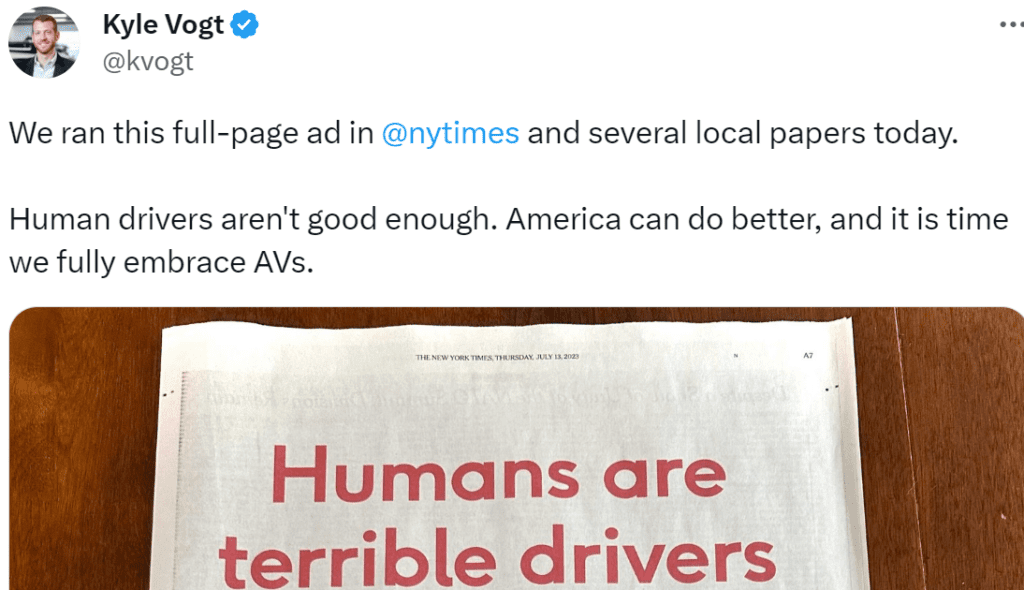AV Safety and the False Dilemma Fallacy

The current AV company messaging strategy is a classic case of a false dilemma fallacy. They frame the situation as a choice between continued human drivers killing people (without statistical context) vs. immature robotaxis who don’t drink and drive (but make other mistakes). (Wikipedia: False dilemma)
The recent Cruise ad in particular is a plainly ridiculous doubling-down on the industry’s long discredited propaganda playbook.
Cruise NY Times ad: https://twitter.com/kvogt/status/1679517290847694848
Analysis of AV industry playbook: https://www.eetimes.com/autonomous-vehicle-myths-the-dirty-dozen/
A more reasonable message would be cities need robotaxis for <reasons> and robotaxi companies will use <defined, balanced metrics, stated in advance rather than cherry picked later> to show they are no worse than human drivers during development, with monthly report card disclosures. Improved safety comes later — we all hope.
Here is where things really stand:
It is too early to know whether current robotaxi technology is safer than human drivers for fatalities. The industry is stringing us along hoping they can show they are safe over time (starting now, but not really there yet). However, non-autonomous technology (AEB) is making far more of a contribution right now — but is missing from the false dilemma. Public transit (much safer) also not in the discussion.The messaging from both sides (parts of the SF govt and especially Cruise) on crashes does not address factors required for a reasonable comparison. (ODD, baseline driver population, etc.)It is clear that vehicles from both Waymo and Cruise are creating public road disruption. There is no excuse for impeding emergency responders just to get “Look Ma, No Driver!!” optics.The technology can be advanced by continuing to test while having human drivers or in-car valets (employee in the front passenger seat) to mitigate problems. Their Safety Management System should include a step of adding/removing in-car vehicle supervisors until issues that cause public disruption are shown to be resolved in deployment.Cruise in particular needs to get more diligent about pre-deployment testing. There is simply no excuse for rear-ending a Muni bus due to a software defect in an uncrewed vehicle that occurred in a pretty normal situation. Waymo isn’t perfect, but their failures are more at the edge.The public outrage is entirely self-inflicted by companies due to their exploitation of the municipal preemption clause in state-level regulations rather than being responsible road users. Playing the “we should forgive their drivers who are still learning” card has worn out its welcome.
Some might want to point out that some companies are worse actors than others, but all the companies have their issues. (For example, good work by the Waymo safety team is hurt by their government relations breathless safety hype messaging.)
And the reality is that a crash or adverse news for one company hurts them all.






